OCTOBER 2019
The Hyades and Pleiades Clusters imaged with the Sony α68 DSLR and 50 and 90 mm prime lenses
[This is just one of many articles in the author’s Astronomy Digest.]
I thinkthat it’s fair to say that Sony have been concentrating on their mirrorlesscameras over the last few years (see article about the Sony A 5000) and theirAPSC sensor DSLRs have not been upgraded for some time. They use a fixed,partially reflecting, mirror to allow light to fall on the array of autofocussensors above. This reduces the lightfalling on the sensor by ~1/3 stop − so one might say that they would not besuitable for astrophotography use. Somehave thought that the fixed mirror in the light path might affect the stellarimages but I think that the imaging exercise described here shows that this isnot the case.
[At the end of the article, is a description of the two current Sony APSC cameras including the A68, 24 megapixel, camera employed for this exercise. They do have some interesting features not found on the Canon or Nikon DSLRs.]
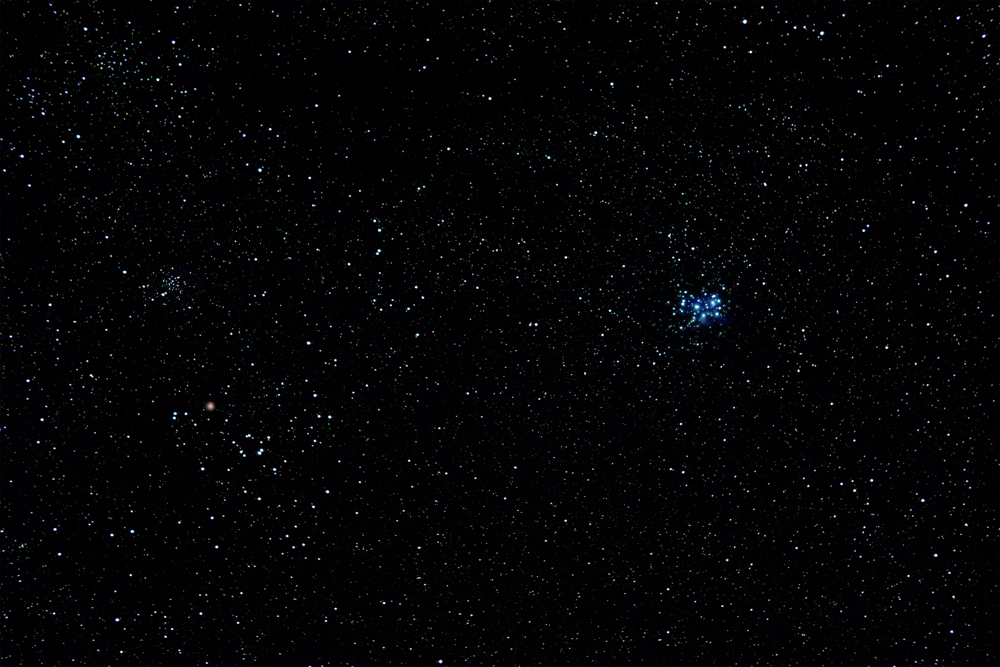
Using a 50 mm prime lens
On the morning of the 2nd October 2019 the sky was transparent and there was no Moon so, in the pre-dawn sky I decided to do a test with a second hand (but nearly new) Sony A68 DSLR that had arrived the previous day. It was mounted on my StarSync tracker (see article ‘Three Tracking Mounts’) which was aligned on the NCP using a laser pointer. The Sony sensors are ISO invariant (*), and using a low ISO can sometimes give better results than higher ones and so the ISO was set at 100.
(*) In thepast I have tended to use ISO 800, but this was an experiment which, as theresult showed, seemed to work well. I have written about this in the article‘What ISO to use for Astrophotography’.
An f/1.8 50mm prime lens was used, set to f/3.5 to give better stellar images than at fullaperture, and a total of 24, 30 second, frames taken before clouds intervened. The camera was controlled with an externalinterfervalometer. Jpegs were captured whichmight limit the quality of the result, but when many Jpeg frames are stacked, one effect is to increase theeffective bit-depth of the result and the use of Raw capture may not have madea significant difference.
These werestacked in Sequator and the 16 bitTiff result loaded into Photoshop. Now that LED street lighting is employedlocally, the light pollution is less than it was. The stacked image had a blue cast rather thana red one as dawn was not far off.
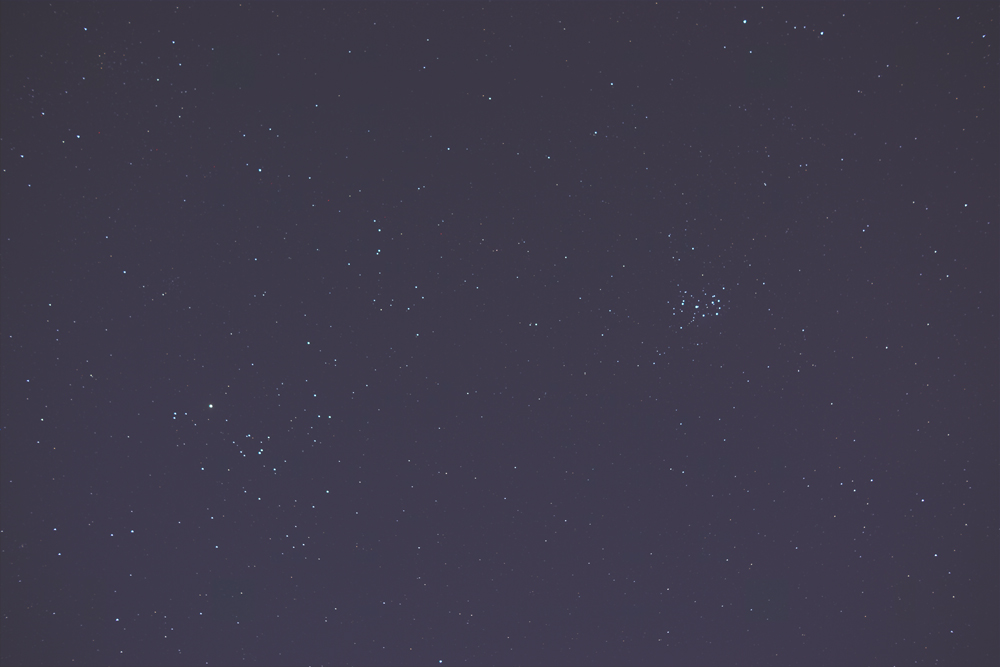
As usual,the image was duplicated and the stars in the upper layer were removed usingthe ‘Dust and Scratches’ filter in Photoshop. (I have described how this can also beachieved using GIMP – see article ‘Removing Light Pollution in Photoshop andGimp’.) The two layers were thenflattened using the ‘Difference blending mode’ to give the result below. As ISO 100 had been used, relatively fewstars were visible, but as the noise level in the image was so low, it couldeasily be stretched to bring out the fainter stars.
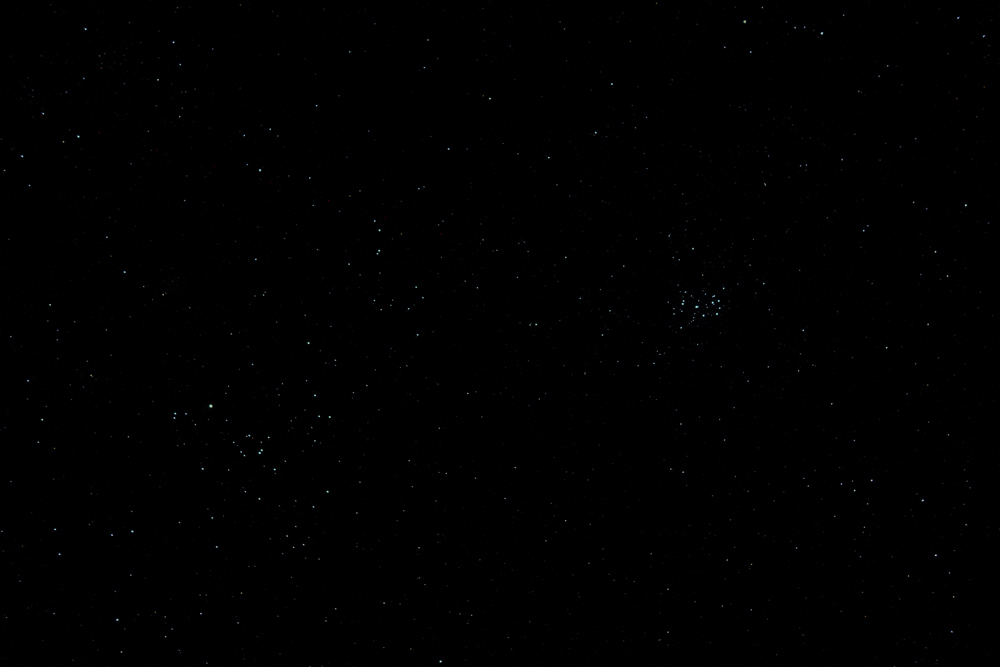
The imagewas stretched using several applications of the ‘Levels’ command with themiddle slider moved leftwards to 1.2. This brightens the fainter stars more than the brighter ones. A final levels application was used to bringup the ‘Black Point’ using the left hand slider to remove the noise from theimage.
Digitalimages tend not to make the brighter stars stand out so an image of thebrighter stars only was made by moving the black point (left hand slider inlevels) to the right. These were made‘larger’ by applying a little Gaussian Blur and their brightness brought backusing the ‘Brightness/contrast’ tool.
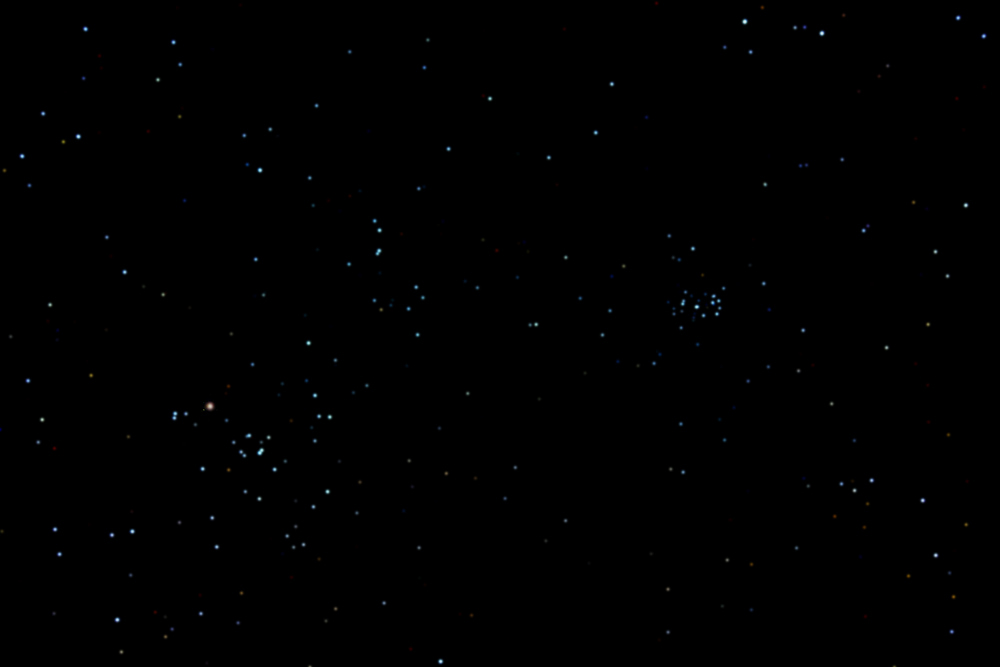
These ‘brighter stars’ were added into the stretched image above using the ‘Screen’ blending mode to give the final result at the head of the article. The image quality of the camera/lens combination cannot be seen in the full, much reduced, image so, below are two 50% images. Though I bought this camera for landscape and video use, I do really think that it is suitable for wide-field astrophotography.
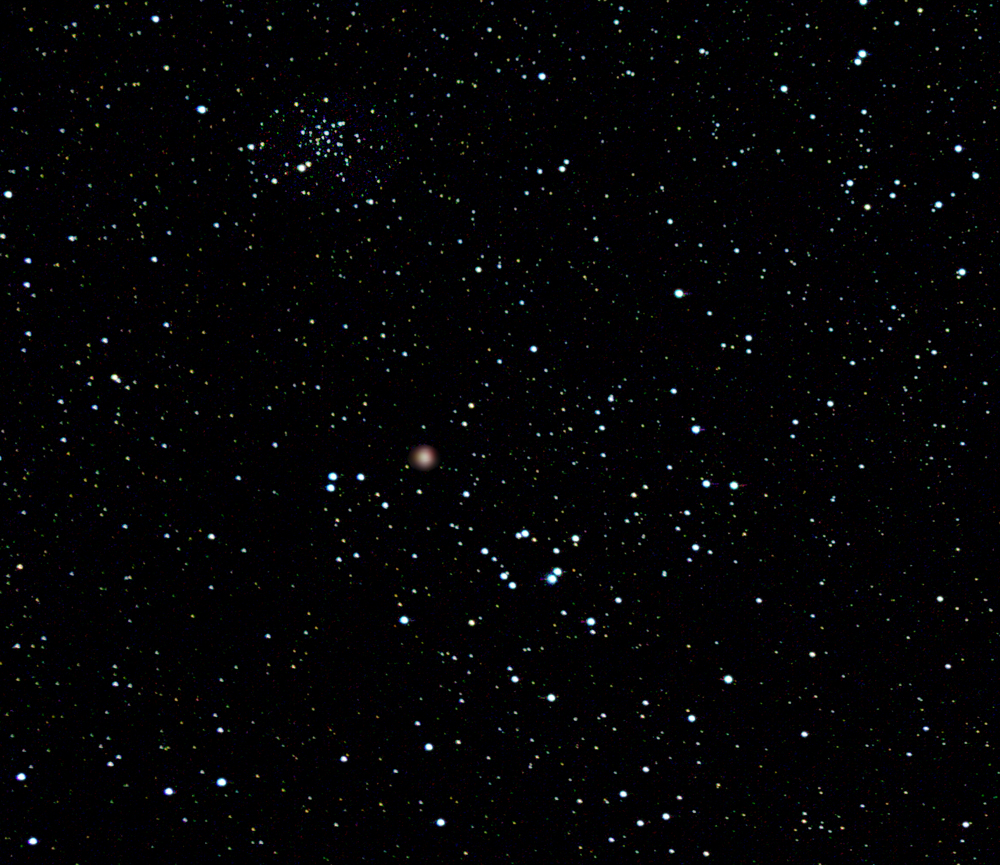
Using a 90 mm prime lens
On the night of the 27th October 2019 I imaged the Pleiades again but, this time, the Sony A68 camera was mounted on my Astrotrac TT320X-AG aligned on the NCP using a laser pointer. The lens used was a Tamron, f/2.8, 90 mm macro lens − which has excellent image quality – stopped down to f/3.5. A total of 51 raw frames were taken using 25 second exposures at an ISO of 400 giving a total exposure of ~21 minutes. The in camera ‘Long exposure Noise Reduction’ was not used (the temperature was just 6 degrees Celsius) nor were any dark frames taken or used. The frames were aligned and stacked in Sequator.
With no moonlight, the image was a reddish-pink colour due to light pollution. This was removed as described above and the image stretched to bring out the nebulosity visible within the cluster. Some ‘hot pixels’ were apparent and these were cloned out. Although the tracking had been very good indeed, there was no sign of ‘Color Mottling’ as discussed by the American, Tony Hallas.
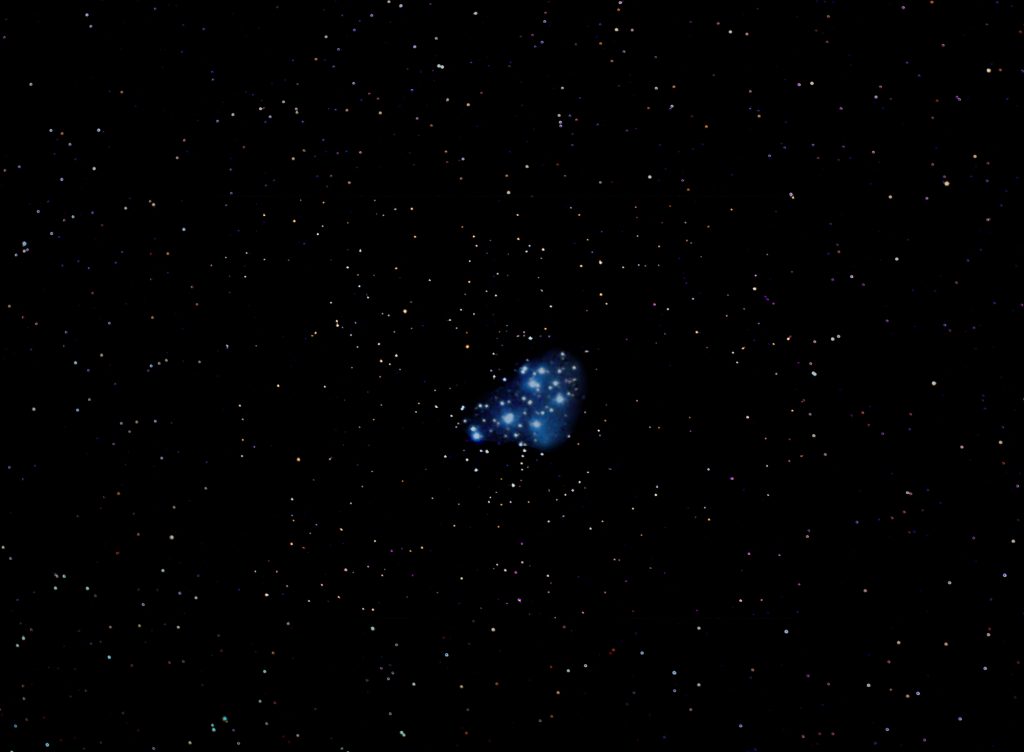
Sony DSLR cameras
The two current models, the α77 II and the, lower priced, α68 cameras do have some good features for general use. The fact that the mirror does not have to move each time an image is taken allows for a very fast burst rate which can help in capturing the ‘decisive moment’. This also allows focus tracking when taking video sequences, so it does have its merits.
In contrast to Nikon and Canon, they include in-body image stabilisation (IBIS) – which could allow somewhat longer exposures to be made so compensating for the slight light loss due to the fixed mirror. They have two useful modes to increase the effective dynamic range of images. In this case one should expose the scene to preserve the highlights. In the first mode, it will automatically lift up the darker regions of the image whilst in the second, a true HDR mode, the camera takes two rapid exposures and combines them to give the final image. The camera can align the two images even if the camera is hand held. The former method, assuming it uses the raw data captured by the sensor, should give a lower noise level in the dark areas than if, for example, the ‘shadows and highlights’ tool in Photoshop is used to lift up their brightness in post processing.
Both camerasemploy Sony Exmore 24.2 Megapixel sensors and the same Bionz X processor so theimage quality should be very similar. Both use, as they must, electronic viewfinders with that of the α77 IIhaving a higher resolution and this camera also has a larger, and higherresolution, rear screen which in both cases can be tilted away from the camerabody – good for astrophotogaphy as it allows better cooling to the rear of thecamera and may make it easier to frame objects at high elevation.
As Sony cameras with A-mounts are less popular now, I have been able to acquire prime lenses at quite low cost for my previous A450 camera. As Sony took over the A-mount from Minolta, Minolta lenses can also be used.